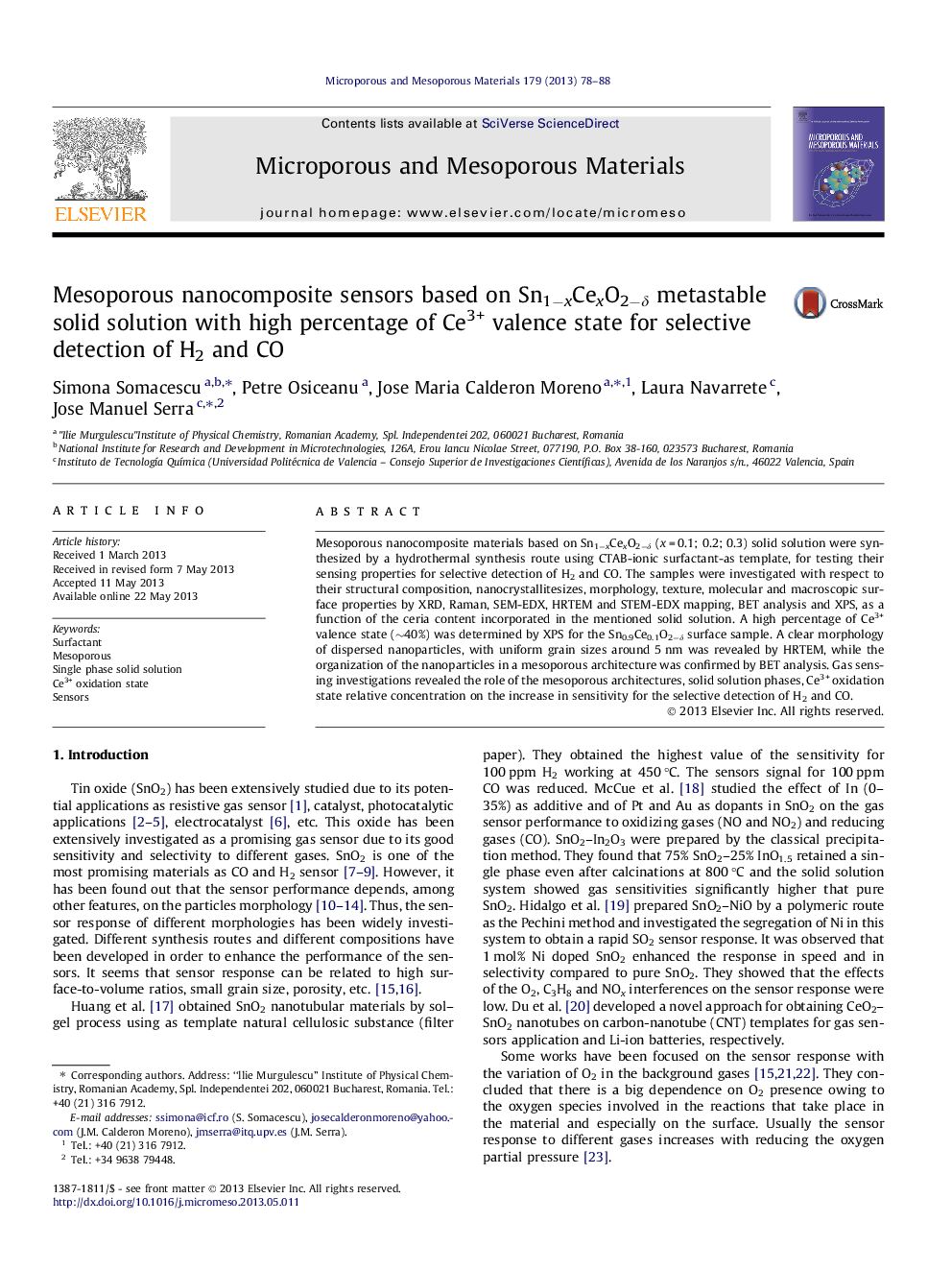| کد مقاله | کد نشریه | سال انتشار | مقاله انگلیسی | نسخه تمام متن |
|---|---|---|---|---|
| 73467 | 49059 | 2013 | 11 صفحه PDF | دانلود رایگان |

• Sn1−xCexO2−δ mesoporous nanocomposites were synthesized by hydrothermal synthesis route.
• A crystalline phase where nearly all Ce was incorporated into SnO2 matrix formed a solid solution.
• A clear morphology of dispersed nanoparticles with uniform grain sizes around 5 nm was revealed.
• High percentage of Ce3+ valence state (∼40%) was highlighted by XPS.
• Sn0.9Ce0.1O2−δ shows an enhanced sensor response for selective detection of H2 and CO detection.
Mesoporous nanocomposite materials based on Sn1−xCexO2−δ (x = 0.1; 0.2; 0.3) solid solution were synthesized by a hydrothermal synthesis route using CTAB-ionic surfactant-as template, for testing their sensing properties for selective detection of H2 and CO. The samples were investigated with respect to their structural composition, nanocrystallitesizes, morphology, texture, molecular and macroscopic surface properties by XRD, Raman, SEM-EDX, HRTEM and STEM-EDX mapping, BET analysis and XPS, as a function of the ceria content incorporated in the mentioned solid solution. A high percentage of Ce3+ valence state (∼40%) was determined by XPS for the Sn0.9Ce0.1O2−δ surface sample. A clear morphology of dispersed nanoparticles, with uniform grain sizes around 5 nm was revealed by HRTEM, while the organization of the nanoparticles in a mesoporous architecture was confirmed by BET analysis. Gas sensing investigations revealed the role of the mesoporous architectures, solid solution phases, Ce3+ oxidation state relative concentration on the increase in sensitivity for the selective detection of H2 and CO.
Figure optionsDownload as PowerPoint slide
Journal: Microporous and Mesoporous Materials - Volume 179, 15 September 2013, Pages 78–88